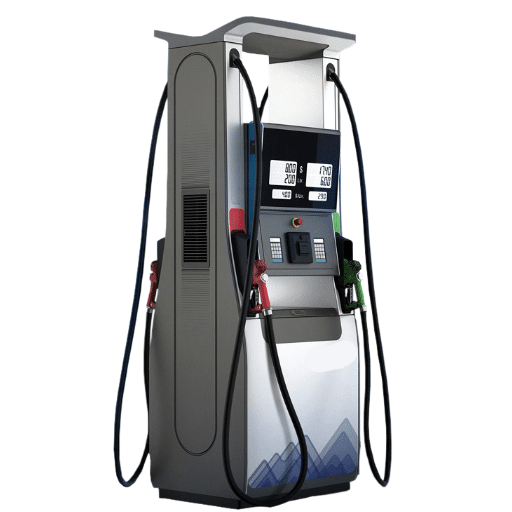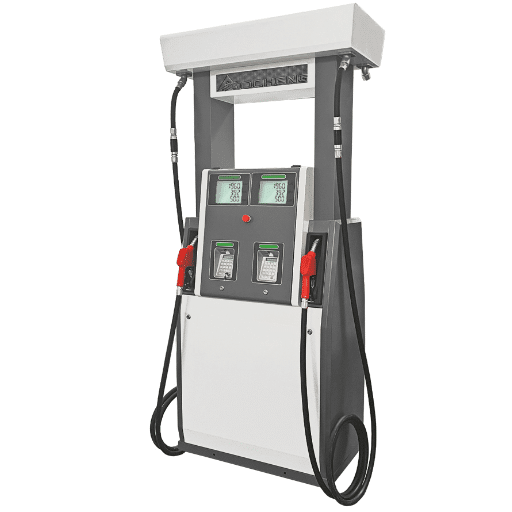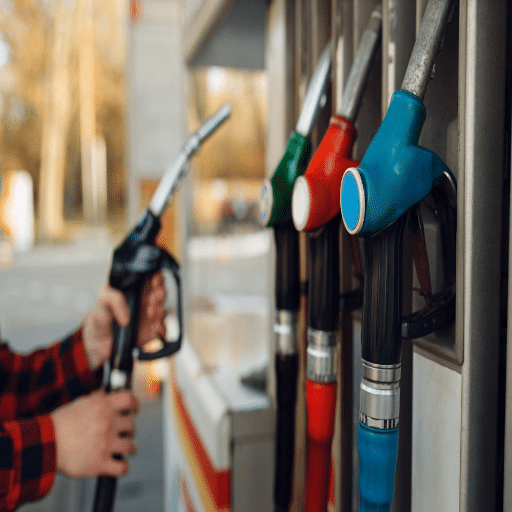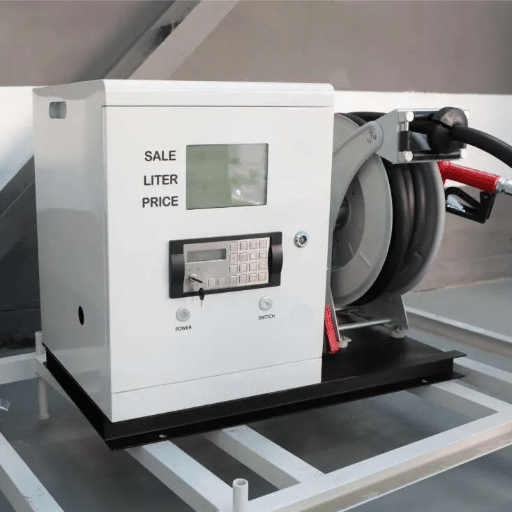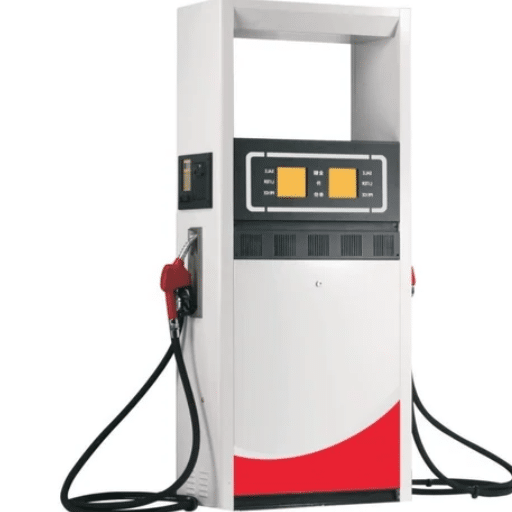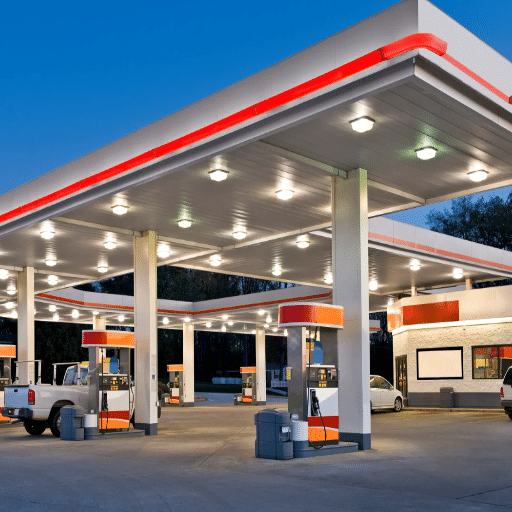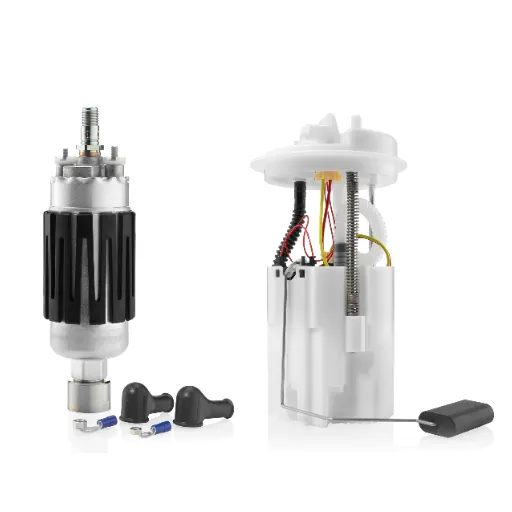When hazardous environmental situations arise, safety and reliability take precedence, both of which are ensured by sufficient lighting in the area. Explosion-proof LED lighting has transformed the landscape of projects involving potential explosive environments, such as oil and gas, chemical manufacturing, and mining. Are they truly explosion-proof, then, and how do you select the correct product for your specific requirements?
This comprehensive information guide aims to demystify explosion-proof LED lighting, describing its design, advantages, and two of its primary applications in hazardous areas. Whether a facility manager, safety officer, or industry practitioner, this article arms you with enough knowledge to make decisions that comply with all safety requirements while optimizing performance. Get ready to discover how advanced lighting technology enhances the safety and productivity in high-risk environments!
Understanding Explosion-Proof Lighting
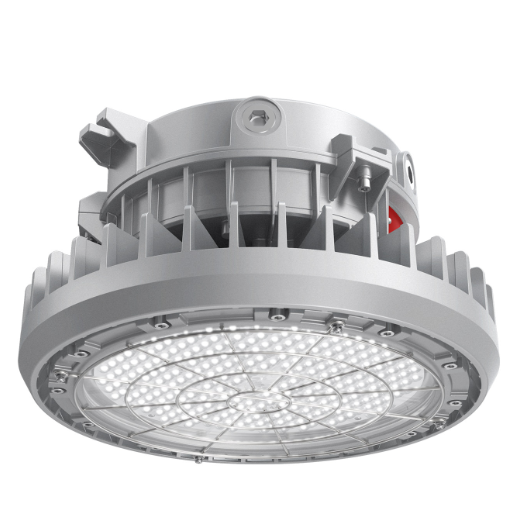
Explosion-proof light; these lights are destined for use where flammable gases, vapors, or dust exist, and therefore, they must operate safely. They do not ignite fires in explosive mixtures because any sparks or heat produced are contained within the sturdy, sealed fixtures. These are so well-built as to meet very stringent safety standards, which are essentially required for industries such as oil and gas, mining, and chemical processing. By eliminating the risk of an explosion, explosion-proof lighting ensures safety and reliability in hazardous conditions.
What is Explosion-Proof Lighting?
Explosion-proof lighting is designed to operate safely in environments with flammable gases or vapors, dust, or fibers, ensuring that any sparks or heat generated inside do not escape into the surrounding atmosphere. These fixtures are not designed to withstand an explosion; instead, they act as a barrier to contain and isolate any hazardous elements that might be generated within the light housing. Using extremely tough materials, such as reinforced aluminum or stainless steel, in conjunction with tempered glass, these lights are sealed under severe conditions with very minimal risk of ignition outside of the enclosure.
Construction of explosion-proof light fixtures must undergo certification according to the strict regulatory requirements of ATEX, IECEx, or UL844. These certifications ensure that the equipment and installation meet safety standards for hazardous locations. Additionally, improvements in LED technology have increased the energy efficiency of explosion-proof lighting. LED explosion-proof fixtures now consume 70% less energy compared to traditional incandescent and fluorescent types, offering better life expectancy and lower maintenance costs.
Explosion-proof LED lighting is a classic choice in industries with hazardous working conditions. For instance, recent industry data reveal that to maintain continuous operations safely, sectors such as oil and gas and mining are increasingly relying on these systems. With an expected annual growth of 6–8% in the industry due to rapid industrialization in the Asia-Pacific and other regions, explosion-proof innovations become crucial in protecting both workers and facilities, as safety takes precedence.
Importance of Explosion-Proof Light in Hazardous Locations
Explosion-proof lighting protects workers and equipment in hazardous work environments where flammable gases, vapors, or combustible dust may be present. These lighting systems are ruggedly designed to prevent sparks caused by electrical discharge or high surface temperatures from igniting an explosion, thereby ensuring operational safety in hazardous areas. According to recent reports, the global explosion-proof equipment market, inclusive of lighting, is expected to surpass $9 billion by 2026, primarily driven by stringent safety regulations and growing awareness of worker protection.
Explosion-proof lighting has been trusted by industries such as oil and gas, chemicals, manufacturing, and mining to maintain productivity while complying with international safety standards, including ATEX and IECEx. Furthermore, with the evolution of LED technology, such lighting has become energy-efficient and durable, keeping maintenance costs low while not compromising on safety. They are generally tested rigorously in various performance parameters under hazardous conditions, ensuring they will perform adequately in the most challenging environments. In favor of the industries and the most humanly considerate, explosion-proof lighting keeps the workforce safe from any dangerous accidents that might cause heavy losses to the industry due to downtime.
Key Features of LED Explosion-Proof Lighting
Quality Construction: LED explosion-proof lights are constructed with durable materials, such as aluminum or stainless steel, to resist extremely harsh conditions, including high temperatures, corrosion, and impact.
Energy Efficiency: These lights use significantly less energy than traditional lights, yet they are incredibly bright, helping industries reduce operational costs.
Safeguarding: Operating without forming an ignition source in the environment, these lights reduce the risk of explosion and make the working environment safer in hazardous areas.
Life Span: LED explosion-proof lighting has an extended lifespan that is typically beyond 50,000 hours, reducing the frequency of replacement and maintenance required.
Standards Compliant: Most LED explosion-proof lighting systems are approved and conform to international safety standards (such as ATEX, IECEx, or UL certification) for safe use in explosive atmospheres.
Versatile use: These lights are utilized in numerous industries, including oil and gas, chemical plants, mining, and any area with a hazardous atmosphere.
Through these characteristics, LED explosion-proof lighting offers the industrial environment the best practical, efficient, and safe alternative.
Types of Explosion-Proof LED Lights
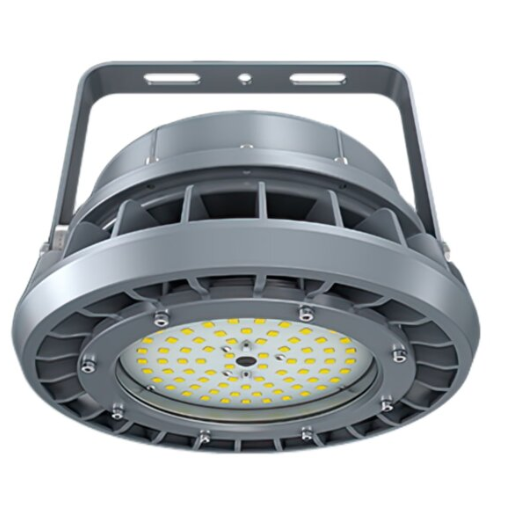
High Bay Explosion-Proof LED Lights: Designed for high-ceiling environments, these lights are well-equipped to meet the illumination needs of warehouses, factories, and industrial plants.
Flood Explosion-Proof LED Lights: The best choice for outdoor or area lighting, these lights provide extensive and consistent coverage needed in hazardous locations.
Linear Explosion-Proof LED Lights: Generally used in walkways, corridors, or assembly lines for evenly distributed lighting in confined or narrow spaces.
Portable Explosion-Proof LED Lights: These compact, lightweight lights provide the convenience of mobility and flexibility for maintenance or emergency use in hazardous environments.
Spot Explosion-Proof LED Lights: Spotlights provide focused illumination, ideal for precise tasks or drawing attention to specific areas in high-risk environments.
Each type of explosion-proof lighting is custom-designed to meet the unique requirements of different applications, ensuring safety and efficiency in hazardous locations.
High Bay vs. Linear Explosion-Proof LED Lights
Explosion-proof LED lighting encompasses high-bay, linear, portable, spot, and flood lights. Below is a summary of how high bay and linear LED lights differ, presented in a concise table:
|
Parameter |
High Bay |
Linear |
|---|---|---|
|
Usage |
High ceilings |
Narrow spaces |
|
Design |
Round/UFO |
Elongated |
|
Mounting |
Ceiling/hook |
Wall/surface |
|
Beam Angle |
Wide/focused |
Even spread |
|
Applications |
Warehouses |
Hallways |
Flood Lights and Area Lighting for Hazardous Areas
Floodlights and area lighting are specific elements that enhance safety and visibility within hazardous areas. These lighting installations are designed to withstand adverse conditions in dangerous atmospheres, such as those containing explosive, flammable gases, or even dusty environments. Their interesting features and applications are explained hereinafter:
Building and Safety: Floodlights for hazardous areas are housed in an explosion-proof enclosure and made of stronger materials to prevent their ignition in a dangerous environment. These lights comply with various codes, including UL, ATEX, and IECEx, for safety concerns.
Lighting Efficiency: These fixtures are primarily designed to deliver clear, uniform light and feature LED technology that is bright, energy-efficient, and has a long lifespan. Furthermore, LEDs reduce maintenance effort in difficult-to-access, high-risk zones.
Applications: Floodlights enable excellent worker visibility in critical operations at oil refineries, chemical plants, and mining operations, thereby minimizing the risk of accidents. Inchoate glare and more open areas, such as storage yards or shipping terminals, benefit from area lighting.
Designed for industrial-class hazards, floodlights and area lighting, with their durability, efficiency, and safety, meet the highest demands of performance and reliability. Proper installation and regular inspections are crucial for maintaining maximum efficiency.
Classification of Hazardous Locations
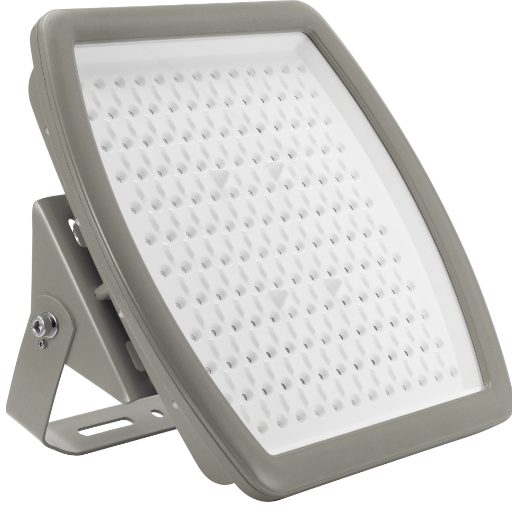
Hazardous location classifications are determined by the presence of flammable gases, vapors, liquids, combustible dusts, or fibers that can cause fires or explosions. The classifications usually comprise three main categories:
Class I – Areas where flammable gases or vapors exist in the air in quantities sufficient to form explosive or ignitable mixtures. Typical examples of this type include oil refineries, chemical plants, and fuel storage facilities.
Class II – Areas where combustible dust is present, such as grain elevators, flour mills, or storage depots for powdered substances. Dust particles can become explosive when suspended in the air and exposed to ignition sources.
Class III – Environments where easily ignitable fibers or flying particles are present, such as in textile mills, woodworking plants, or other places handling combustible materials. While fibers and flyings are less prone to being suspended in the air, they still pose fire hazards.
Each class is further divided into divisions or zones based on the frequency and likelihood of hazardous substances being present. Proper equipment selection, adhering to safety codes, and rigorous maintenance are essential to ensuring safety in these environments.
Understanding Division and Zone Classifications
An alternative classification of hazardous spots is made by dividing and zoning. The systems help define hazards and, consequently, evaluate and determine safety requirements and conversion measures suitable for the given environments.
The division system is used mainly in North America. It is divided into Division 1 and Division 2. Division 1 means that hazardous substances, such as gases, vapors, or dusts, are present during normal operations and continuously, with a frequent risk of exposure. Under Division 2, hazardous materials are only present under abnormal circumstances, or say, during equipment malfunctions, accidental leakage, etc.
The Zone classification system is internationally recognized and offers a more nuanced classification. For gases and vapors, Zone 0 describes an area where a hazard is present continuously or for long periods. Zone 1 is an area in which the hazard occurs in regular operation, and Zone 2 is an area in which the hazardous material is unlikely to occur. If it does, it will be for only a very short period. For dust, the zones are 20, 21, or 22, respectively, depending on the level of risk.
Both systems are designed to ensure safety in hazardous atmospheres by specifying the selection of explosion-proof equipment, wiring methods, and protective measures. Understanding the classification systems becomes essential to maintain compliance and ensure the safety of workers in industries such as chemical processing, oil and gas, and manufacturing.
Choosing the Right Fixture for Each Classification
When fixtures are required for installation in hazardous locations, they must be rated for the area to prevent ignition of explosive atmospheres. For Class I, Division 1, or Zone 1 locations, the fixtures must be explosion-proof to avoid sparks or flames generated within the enclosure from igniting the flammable gases present. On the other hand, for Class II, Division 1, or Zone 21 locations, dust-ignition-proof fixtures are specified that can prevent the accumulation of explosive dust and protect against sparking. For lesser risk locations, such as Class I, Division 2, or Zone 2, non-sparking or intrinsically safe fixtures may be considered sufficient, as ignitable concentrations are less likely to exist in these locations.
In addition to environmental requirements, consider factors such as humidity, temperature, and light levels to ensure effective operation and durability. Always verify that the equipment has been certified by the relevant standards, such as UL, ATEX, or IECEx, depending on the regulations applicable in your region. By selecting fixtures suitable for their particular classification, the industry can reduce or eliminate the risk of an accident occurring and, at the very least, maintain compliance with safety regulations.
Regulatory Standards for Hazardous Locations
Hazardous location regulatory standards provide safety and compliance for working in environments where flammable gases, vapors, dust, or fibers may be present. Mainly, these standards include:
UL (Underwriters Laboratories) – The UL Standards, among others, concentrate on testing and certification for the safety and reliability of products, including those from explosive atmospheres. For example, UL 1203 certifies equipment for explosion-proof and dust-ignition-proof applications.
ATEX (Atmospheres Explosibles) – ATEX is a European Union directive that regulates equipment and protective systems intended for use in hazardous atmospheres. Equipment is designed to match zone classifications (e.g., Zone 1 or Zone 2 for gas atmospheres) based on the likelihood of an explosive atmosphere being present.
IECEx (International Electrotechnical Commission System for Certification to Standards Relating to Equipment for Use in Explosive Atmospheres) is the nomenclature for an international system that establishes a set of rules and guidelines to ensure equipment complies with worldwide safety standards. It administers the entire scheme for the development of technical documentation for testing and certification, providing manufacturers with the ease of meeting requirements for international trade.
Spotting and labelling should be done by the provisions. Therefore, an explosion-proof type marker should denote the safety level of the equipment, the intended zones of use, and the specific hazardous groups against which protection is afforded. Adhering to these standards and being familiar with the relevant regulatory frameworks applicable to your location will create a safe working environment. I strongly recommend that you always seek advice from certified professionals and competent governing bodies.
Installation and Maintenance of Explosion-Proof LED Lights
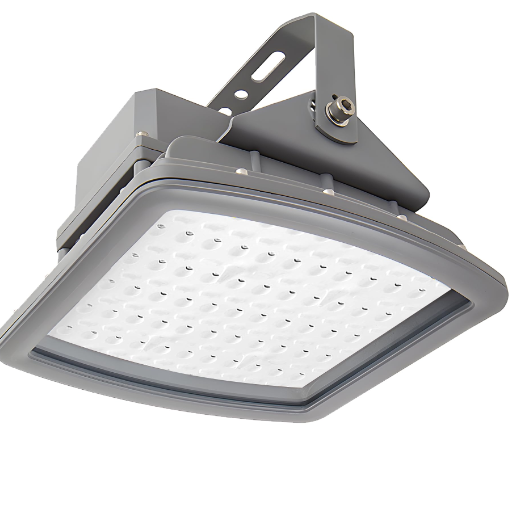
Installation: The LED lights must have a rating suitable for the particular hazardous zone in which they are to be installed. The lights should be fastened securely to withstand any movement or vibration-generating activities using specified brackets and hardware. All wiring must be well-insulated and run inside certified, explosion-proof conduits, ensuring that the seals are in place. Complete the installation procedures according to the manufacturer’s instructions and local safety rules and regulations.
Maintenance: Regularly inspect the lights for visible signs of damage, such as cracks or corrosion, that could compromise safety. Clean the lights using approved methods to prevent the buildup of dust or debris. Use only certified components as a replacement for any damaged parts. Always ensure that the power is switched off and isolated at the circuit before conducting any maintenance activities. Conduct regular checks to ensure conformity with the specified safety standards.
Best Practices for Installing Explosion-Proof Lighting
The installation of explosion-proof lighting must be carried out with utmost precision and care to ensure both safety and efficiency. Below is a list of quality best practices that must be used:
Specify the Hazardous Zone Classification: Use the hazardous zone classification of the area before installation. This determination specifies the types and levels of explosive hazards that exist, allowing for the selection of appropriate lighting. E.g., Zone 1 = areas where a flammable gas atmosphere is frequently expected; Zone 2 = areas where an atmosphere is less regularly expected to be present. Use lights according to the zone classification.
Select Explosion-Proof Fixtures that are Certified: Verify all lighting equipment for certification and compliance standards such as UL, ATEX, or IECEx. These certifications ensure that the lamps are designed to operate safely in hazardous environments without posing an explosion risk. The certified fixtures are tested under stringent conditions and may be relied upon in dangerous locations.
Ensure Proper Installation Techniques: Use explosion-proof conduits, junction boxes, and fittings to prevent electrical hazards. Each connection should be tightened and sealed from gas or dust entry. In addition, follow the manufacturer’s instructions carefully during installation to avoid any weak areas.
Consider Material Durability: Select fixtures with materials specifically designed for particular chemical and environmental conditions. For example, stainless steel or aluminum casings are excellent options if corrosion is expected, whereas impact-resistant glass is highly recommended.
Ambient Temperature Considerations: It is recommended to be mindful of the maximum surface temperature of the lighting equipment about the ambient operating temperature. Explosion-proof fixtures must consistently be rated for the temperature conditions of the area where they will be installed, to prevent them from becoming an ignition source.
Routine Testing and Maintenance: Regularly inspect the equipment to ensure it is performing at the highest possible level and remains compliant. The best industry practice involves preventive maintenance, which includes cleaning, testing, and replacing damaged parts. Monitoring solutions can be employed to enhance efficiency, sending real-time alerts if an abnormality occurs.
Energy Efficiency and Operating Life: Opt for LED-based explosion-proof lighting whenever feasible. Compared to other light sources, LEDs are energy-efficient and have a longer operating life, which reduces maintenance frequencies and downtime in hazardous locations. For instance, a high-quality LED fixture can last for 50,000 hours or more.
By following these guidelines, organizations can ensure safety in their working environments, comply with the regulations of their respective industries, and implement cost-efficient measures in the long term.
Maintenance Tips for Longevity and Safety
Proper maintenance of lighting systems is crucial for prolonging their lifespan and ensuring operational safety. Inspections should be conducted regularly to prevent issues with loose connections, damaged wires, or overheating. It is recommended to perform checks at least quarterly, especially in situations where vibration may be an issue or the temperature fluctuates, as these conditions can lead to wear over time.
Cleaning out the fixtures and lenses will significantly increase light output and efficiency. Dust, dirt, and debris can diminish brightness by up to 30%, thereby lessening productivity and safety in the workspace. Use appropriate cleaners indicated by the manufacturers; recommending an abrasive cleaner may damage the finish of the fixture.
Additionally, replace outdated or worn-out components as soon as possible, such as ballasts in older systems. The integration of surge protectors would protect lighting systems from electrical surges, which is particularly important in areas that have a high incidence of lightning or an unstable power grid. Industry data indicate that power surges are one of the leading causes of equipment failure without warning.
LED lighting upgrades can reduce maintenance costs while extending the life of the lighting system. For example, modern, high-quality LED luminaires can easily exceed a lifetime of 50,000 hours, resulting in fewer replacements and consequently reduced labor costs. When these maintenance measures are adhered to, they ensure safe working conditions while also maximizing the value of the investment in industrial lighting systems.
Common Issues and Troubleshooting
While industrial setups are generally designed with durability in mind, specific issues may arise, which can affect their performance and efficiency. One such common problem is flickering of lights, which can be caused by loose connections, irregular voltage supply, or failing components, such as drivers. Technicians should check the wiring connections, test for a constant voltage supply across supply points, and replace faulty drivers or capacitors to rectify these issues. Evidence suggests that addressing these issues can result in an energy savings of 15%.
Another common issue is the overheating of LED fixtures, which is often caused by inadequate ventilation or operating in an environment that exceeds the maximum operating temperature required for a particular lighting fixture. Such overheating limits the lifespan of the LEDs and could similarly lead to early failure. With regular check-ups or intervention through the installation of heat sinks or ventilation systems to combat the heat, the life of such lighting can be extended by about 30%.
Dust and debris pose yet another challenge in many industrial environments. They hinder light output due to excessive buildup and increase the likelihood of fixture damage. Cleaning on schedule, using proper cleaning agents, can ensure that lighting is performing at its best and, additionally, may prevent up to a 25 percent degradation of light performance over time.
As the final issue, voltage surges persist in areas prone to spikes. The surge protection device will protect the equipment and minimize downtime. Data show that by implementing surge protection in lighting systems, incidences of damage are reduced by approximately 40%.
Taking these general problems into account will help improve the reliability, safety, and efficiency of industrial lighting, enabling facilities to meet their operational requirements.
Benefits of LED Explosion-Proof Lighting
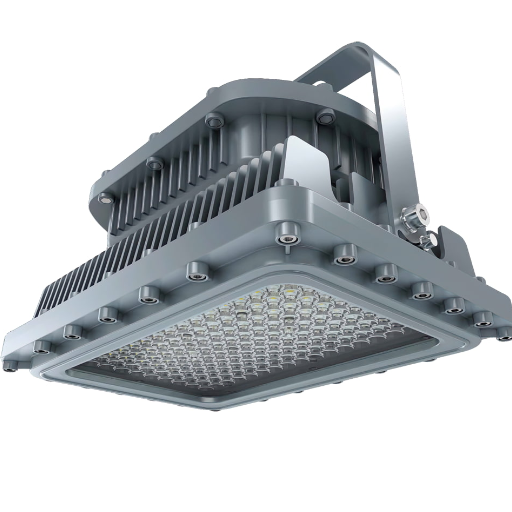
Safety Enhancement: Designed for use in hazardous atmospheres, LED explosion-proof lights eliminate or contain any ignitions, sparks, or heat to ensure the safety of explosive atmospheres.
Energy Efficiency: Low energy consumption results in lower energy bills. This is in contrast to conventional lights.
Durability: Based on the design material, LED explosion-proof lights can operate reliably under harsh conditions, including moisture, dust, and extreme temperatures, ensuring longevity and optimal performance.
Low Maintenance: It reduces maintenance in terms of downtime and replacement, with fewer lamps needing replacement due to their longer lifespan.
Greater Visibility: LEDs are brighter, with increased glare, which boosts visibility and, consequently, performance in critical operations.
Energy Efficiency and Cost Savings
LED explosion-proof lights conserve energy and provide a high level of efficiency in lighting solutions for various industries. Recent evidence shows that LEDs consume 75% less power than incandescent lamps but offer a lifespan that lasts 25 times longer. This results in significant reductions in energy bills, particularly for operations that require uninterrupted lighting.
Another significant advantage of LED technology is that it can convert the energy supplied to it into light, with very little heat generated. For example, some industrial sites have reported energy savings of up to 60% after switching to LED explosion-proof lighting, thereby reducing the organization’s operational costs.
Cost savings also occur due to the extended lifespan of an LED, which can exceed 50,000 hours of operation, as well as reduced maintenance requirements. Thus, by reducing the need for periodic replacements of traditional lighting and considering the labor involved in such replacements, resources in facilities can be better utilized. With LED technology constantly evolving and sustainability in mind, LED explosion-proof lighting offers economically positive returns in both the short and long term.
Durability and Longevity in Harsh Environments
Where LED explosion-proof lighting is famous for its endurance, it withstands extreme conditions and remains operational. I think since they are sturdily built, such an environment lacks the temperature extremes, vibrations, or corrosive agents, thereby ensuring the lighting works in whatever circumstance is needed. The reliability further helps reduce downtime and enhance safety in the working environment, thereby making this lighting an ideal selection for industrial and hazardous locations.
Environmental Impact of LED Technology
LED technology has a lower environmental impact than any conventional method of lighting. Energy consumption by LED is significantly lower, at least a 75% reduction in energy demand on power plants, which cuts down on greenhouse emissions. Additional environmental advantages include a longer life and consequent fewer replacements and disposal items in the landfill. Europe does not like it when we dump our combined fluorescent tubes into its landfill because they contain mercury; LEDs do not contain such substances. Then, as energy usage decreases with increased efficiency, resource depletion also decreases, making it an environmentally sustainable alternative for residential and commercial lighting. The promotion of energy conservation via LED technology thus spells the greening of the environment.
Reference Sources
“Research on LED Fishing Light”
Frequently Asked Questions (FAQs)
What is an explosion-proof light, and how does it work?
An explosion-proof light is a type of lighting fixture designed to operate safely in hazardous environments where flammable gases, vapors, or dust may be present. These lights are built to contain any explosions that may occur within the fixture, preventing ignition of surrounding materials. They often comply with standards such as UL 844 and are used in industries like oil and gas, chemical processing, and mining.
How does LED explosion-proof lighting compare to traditional lighting?
LED explosion-proof lighting offers several advantages over traditional lighting options. They are more energy-efficient, providing higher lumens per watt, which translates to lower energy costs. Additionally, LED fixtures have a longer lifespan and reduced maintenance requirements, making them ideal for industrial settings where safety and reliability are paramount.
What are the key features of explosion-proof LED lights?
Explosion-proof LED lights typically feature durable, rugged construction to withstand harsh conditions. They are designed to meet specific classifications, such as Class I, Division 2, or Class II, Division 1, ensuring they can safely operate in environments with potential ignition sources. Furthermore, many models are vapor-proof or vapor-tight, preventing moisture and contaminants from entering the fixture.
In what hazardous locations are explosion-proof lights commonly used?
Explosion-proof lights are commonly used in hazardous locations such as oil and gas refineries, chemical plants, paint booths, and areas with combustible dust. These environments require specialized lighting solutions to ensure safety and compliance with national electrical codes and regulations.
What types of fixtures are available in explosion-proof LED lighting?
Explosion-proof LED lighting is available in various fixture types, including high-bay lights, floodlights, linear lights, and jelly jar lights. Each type is designed for specific applications and can be used in different settings, from warehouses to outdoor facilities.
How do I choose the right explosion-proof LED light for my application?
Choosing the right explosion-proof LED light involves considering factors such as the classification of the hazardous area, the required lumen output, and the fixture’s physical characteristics. It’s essential to assess the specific needs of your industrial lighting application and consult with manufacturers or suppliers to ensure compliance with safety standards.
Are there specific regulations governing the use of explosion-proof lighting?
Yes, explosion-proof lighting must comply with various regulations and standards, including UL 844, which outlines safety requirements for electrical equipment in hazardous locations. Additionally, the National Electrical Code (NEC) provides guidelines on the installation and use of explosion-proof fixtures to ensure safety in industrial environments.
Can LED explosion-proof lighting be used in extreme environments?
Yes, LED explosion-proof lighting is designed to be durable and can be used in extreme environments, including those with high temperatures and high humidity. These lights are designed to withstand harsh conditions, ensuring reliable performance and safety in demanding industrial environments.

